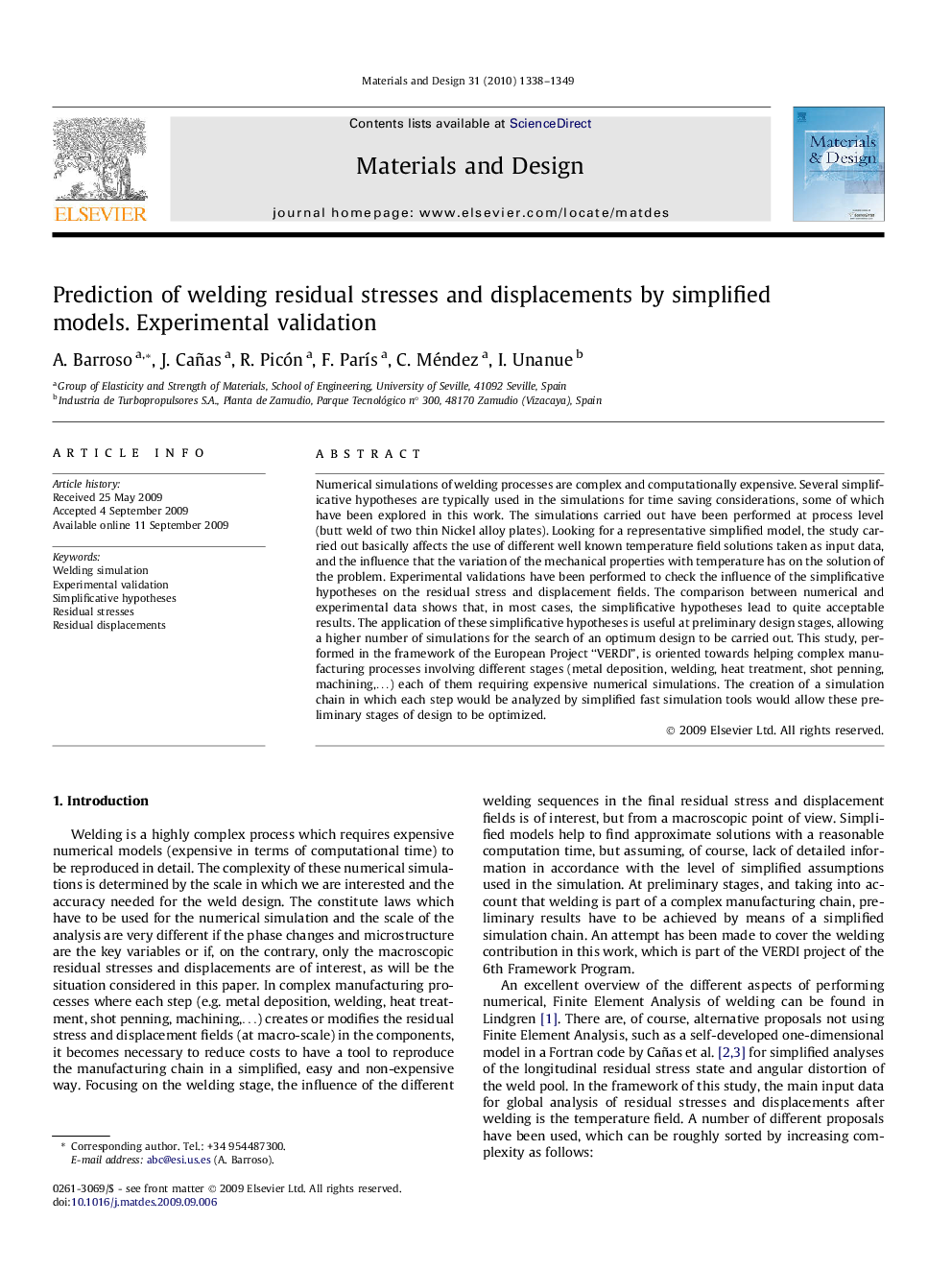| Article ID | Journal | Published Year | Pages | File Type |
|---|---|---|---|---|
| 832502 | Materials & Design (1980-2015) | 2010 | 12 Pages |
Numerical simulations of welding processes are complex and computationally expensive. Several simplificative hypotheses are typically used in the simulations for time saving considerations, some of which have been explored in this work. The simulations carried out have been performed at process level (butt weld of two thin Nickel alloy plates). Looking for a representative simplified model, the study carried out basically affects the use of different well known temperature field solutions taken as input data, and the influence that the variation of the mechanical properties with temperature has on the solution of the problem. Experimental validations have been performed to check the influence of the simplificative hypotheses on the residual stress and displacement fields. The comparison between numerical and experimental data shows that, in most cases, the simplificative hypotheses lead to quite acceptable results. The application of these simplificative hypotheses is useful at preliminary design stages, allowing a higher number of simulations for the search of an optimum design to be carried out. This study, performed in the framework of the European Project “VERDI”, is oriented towards helping complex manufacturing processes involving different stages (metal deposition, welding, heat treatment, shot penning, machining,…) each of them requiring expensive numerical simulations. The creation of a simulation chain in which each step would be analyzed by simplified fast simulation tools would allow these preliminary stages of design to be optimized.
